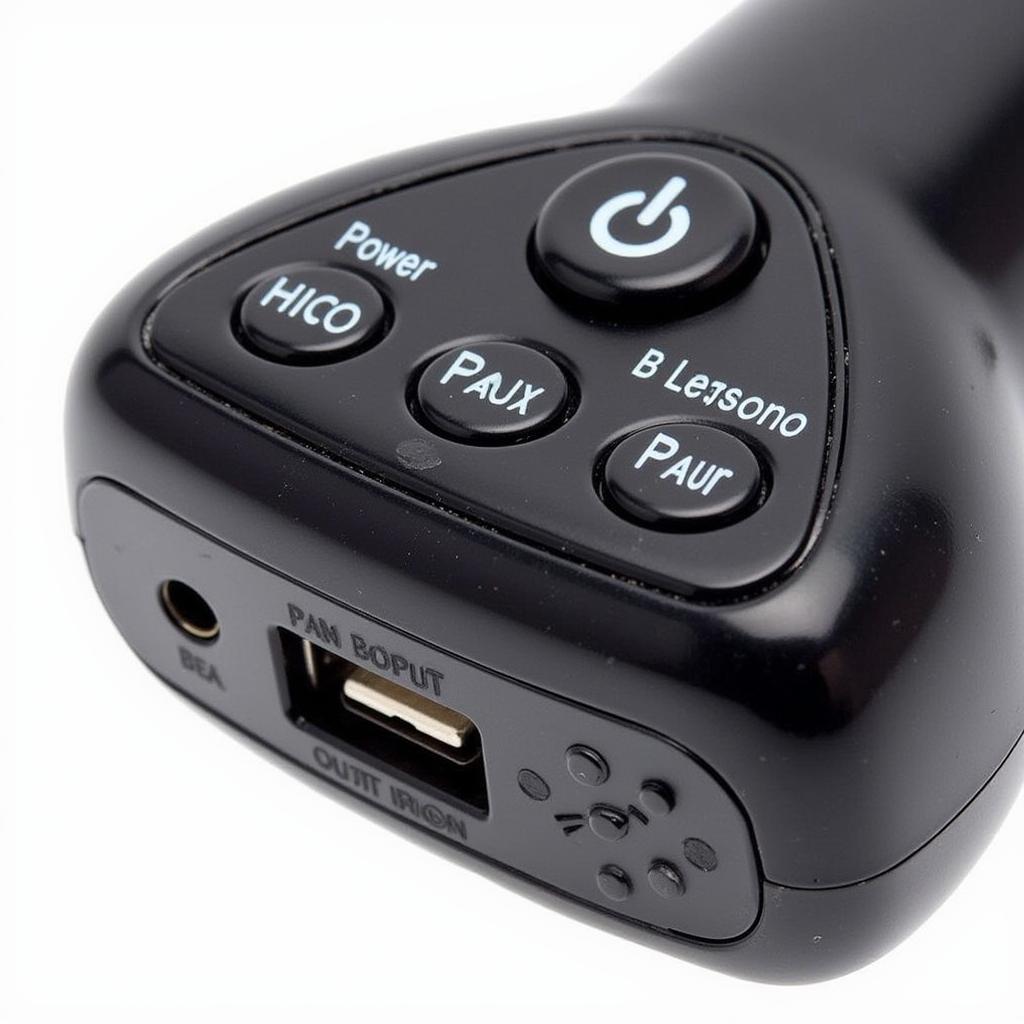In today’s world, car theft is a serious concern for vehicle owners. Thankfully, modern vehicles come equipped with sophisticated electronic anti-theft devices designed to deter thieves and provide peace of mind. But how do these systems actually work? This article will delve into the intricacies of electronic anti-theft devices, exploring their mechanisms and how they help protect your car.
Understanding the Basics: Immobilization and More
At their core, most electronic anti-theft systems focus on immobilization. This means preventing the engine from starting without the correct key or authorization. Let’s break down the key components and how they work together:
1. The Transponder Key: Your Car’s Secret Handshake
Gone are the days of simple metal keys. Modern cars utilize transponder keys, which contain a small microchip embedded within the key fob. This chip holds a unique identification code.
2. The Immobilizer System: The Gatekeeper of Your Engine
Within your car resides the immobilizer system, consisting of:
- Immobilizer Control Unit (ICU): The brain of the operation, this computer chip receives signals from your key and makes decisions about starting the engine.
- Antenna Ring: Located around the ignition cylinder, this antenna reads the signal from your transponder key when you insert it.
3. The Starting Sequence: Communication is Key
- When you insert your key into the ignition, the antenna ring sends out an electromagnetic signal.
- Your transponder key’s chip receives this signal and transmits its unique code back to the antenna.
- The ICU then verifies this code. If the code is correct, the ICU unlocks the engine control unit (ECU), allowing the car to start.
Beyond the Basics: Additional Security Features
Many modern anti-theft systems include additional features for enhanced protection:
- Alarm Systems: These systems utilize sensors to detect unauthorized entry (like breaking a window) and sound a loud alarm to scare off thieves and alert others.
- GPS Tracking: Some systems use GPS technology to track your vehicle’s location in case of theft, aiding in recovery efforts.
- Remote Keyless Entry (RKE): This technology allows you to lock, unlock, and even start your car remotely using a key fob, often including a panic button for emergencies.
Troubleshooting Anti-theft Systems: What if Something Goes Wrong?
While anti-theft systems are generally reliable, issues can arise:
- Dead Key Fob Battery: A dead key fob battery can prevent the transponder from sending its signal. Replacing the battery is usually a quick fix.
- Faulty Components: Malfunctions in the antenna ring, ICU, or wiring can disrupt communication between the key and the car.
- Programming Errors: Issues during the key programming process can lead to recognition problems.
If you experience problems with your anti-theft system, it’s crucial to consult a qualified automotive electrician or mechanic. They have the diagnostic tools and expertise to identify and resolve the issue safely.
Common Questions About Electronic Anti-theft Devices:
Q: Can I bypass the immobilizer if I just want to start my car with a regular key?
A: Bypassing the immobilizer is highly discouraged and often illegal. These systems are designed for your protection, and attempting to circumvent them can damage your vehicle’s electrical system.
Q: What should I do if my car alarm keeps going off accidentally?
A: Frequent false alarms could indicate a problem with the alarm system’s sensors, sensitivity settings, or wiring. Consulting a professional for diagnosis and repair is recommended.
Q: Can I install an aftermarket anti-theft system on my older car?
A: Yes, there are aftermarket anti-theft systems available for older vehicles. However, it’s essential to choose a reputable brand and have it professionally installed to ensure compatibility and proper functionality.
Q: How often do anti-theft systems need maintenance?
A: While routine maintenance isn’t usually required, it’s good practice to have your system inspected by a qualified technician during regular car servicing. They can check for any potential issues and ensure everything is working correctly.
Q: What is the difference between OEM and aftermarket car diagnostic tools, and which is better for diagnosing anti-theft system issues?
A: OEM (Original Equipment Manufacturer) tools are designed specifically for a particular car brand, while aftermarket tools offer broader compatibility. For diagnosing complex anti-theft system issues, especially those involving key programming or module communication, OEM tools often provide more accurate results and advanced functionalities. For instance, the Cardiagtech brand offers a range of specialized diagnostic and programming tools catering to various vehicle makes and models.
Cardiagtech: Your Partner in Automotive Diagnostics and Repair
For expert assistance with your vehicle’s electronic systems, including anti-theft devices, turn to Cardiagtech. Our team of skilled technicians utilizes advanced diagnostic equipment and software, including specialized tools for specific car brands, to accurately identify and resolve issues, ensuring your car’s security and optimal performance.
Connect with Cardiagtech today for all your automotive diagnostic and repair needs!


